Embracing the Unique
Previously printed in PEN, May 2018
When children are diagnosed with hemophilia, they are each given an essential diagnostic label: for example, hemophilia A or hemophilia B, severe, moderate, or mild. These labels originate from a lab analysis of the child’s blood. The diagnosis determines what type of factor replacement therapy each child will get. Labels like these can help draw a picture of who your child is and what he or she needs. But when it comes to dosing and prophylaxis regimen, sport choices and bleeding patterns, and even pain management, your child with hemophilia is unique. Diagnostic labels don’t adequately explain a person’s individuality and needs.
 We asked parents from Facebook about their children with hemophilia: Has anyone ever used the labels of hemophilia to categorize your child, which resulted in limiting treatment options, or limiting what people think your child can do? What is it about your child that is not “typical” for someone with hemophilia? The responses poured in. While a child’s uniqueness may be revealed in a preference for certain sports or a physiological reaction to a particular product, most of the parental responses we received were about each child’s unique half-life, and about subsequent bleeding patterns.
We asked parents from Facebook about their children with hemophilia: Has anyone ever used the labels of hemophilia to categorize your child, which resulted in limiting treatment options, or limiting what people think your child can do? What is it about your child that is not “typical” for someone with hemophilia? The responses poured in. While a child’s uniqueness may be revealed in a preference for certain sports or a physiological reaction to a particular product, most of the parental responses we received were about each child’s unique half-life, and about subsequent bleeding patterns.
Half-life was barely mentioned when my son was born. In the late 1980s and early 1990s, we dosed his factor using a chart based on his weight; it was very mathematical. We took one-half of his weight in kilograms times the factor level we desired, and this equaled the number of units of factor VIII we needed to infuse. Over time, as parents, we developed intuition about how much or how little factor our son needed based on his response to factor and his bleeding patterns, and we could adjust his dosage ourselves.
Up until about the last 10 years, hemophilia treatment centers (HTCs) often prescribed factor dosages based on weight, and determined a prophylaxis regimen based on a strict protocol from clinical studies. We now know that every child needs to have a pharmacokinetic (PK) or recovery study done to determine his or her individual, unique half-life response to a specific factor VIII product. Determining the unique half-life can help hone the amount of factor a child should receive, or indicate the best prophy regimen. A short half-life may mean more frequent infusions, higher doses, or the use of extended half-life products.
If anyone knows about the uniqueness of factor half-lives in children with hemophilia, it’s June Reese, who has four sons with hemophilia. She says, “One son has always had a short half-life and has really struggled with bleeds. His teachers often compare him to his brothers, one of whom never bleeds.” And this was a problem for the Reese family: in categorizing two brothers with textbook half-lives as “normal” for hemophilia, teachers dismissed the third brother’s frequent bleeds—they thought he was being careless, or worse, that he was imagining the bleeds.
Crystal Eskine has two sons with severe hemophilia A, ages 9 and 10. “I expected two similar stories,” she laughs. Despite having the same diagnosis as his brother, Crystal’s 10-year-old bleeds spontaneously, “if you look at him too hard.” Her younger son “never needs factor,” and “he isn’t even on prophy he bleeds so little!” When Crystal’s doctor wanted her to adhere to a traditional dosage and infusion schedule with her older son, her gut instinct told her it wasn’t good enough. She knew her children’s unique responses to factor. “I started giving my older son double doses. I took notes, showed our doctor, but he still he thinks I’m worrying too much, while I still don’t think the dosing regimen is good enough.” Crystal continues, “I’ve asked for a PK test, with blood samples taken over a much longer time period, but he has said no.”
And then there is Jen Miller’s five-year-old with severe hemophilia A. Jen calls him a “typical boy” who enjoys video games, swimming, T-ball, and playing with his friends. His
factor half-life is very short, which is not typical, but this doesn’t seem to impact his bleeding patterns.
When a shorter half-life does impact bleeding patterns, and parents instinctively know something isn’t right, they need to alert their HTC staff, sometimes to prove that their child does not fit a category or label. In these cases, parents should request a PK study. Crystal laments, “My boys’ hematologist makes me feel like I’m doing something wrong, but refuses to do a PK study.” June adds, “For years, our medical staff acted as though we were to blame when he’d have bleeds—even though he was infusing regularly.”
Kate Stotz, who has a 22-month-old with severe hemophilia A, felt she had to fight against the standard prophy infusion schedule of three times a week. “This was not working for our son,” she explains. “He was having frequent bleeds on Sunday, the day he was unprotected. Trough levels indicated that in order to maintain a minimal 1% trough, we could not exceed 48 hours between infusions.” Though Kate wanted to infuse every other day to keep him protected, her son’s hematologist didn’t want to break from the traditional schedule the HTC normally prescribed. “It took a lot of advocating on our part and ultimately finding a new doctor at a different HTC.”
Sarah Hueston successfully advocated for a new prophy regimen for her 16-year-old son with severe hemophilia A, who plays two varsity sports. When they determined he had a short half-life, the HTC team, Sarah, and her son developed his treatment plan together. He now infuses standard factor daily. “It’s what works for us,” says Sarah, “and his doctors are so proud of him, as are we, his family! Never did we think he’d be doing the things he’s doing even 10 years ago!”
By logging her son’s bleeds, Stacey Mollinet was able to convince her HTC team to change the treatment schedule. When her son with severe hemophilia A was a young teenager, he didn’t bleed like a typical severe and was not very active by nature. “I had to push the HTC,” she recalls, “so he could treat only twice a week, instead of a standard prophy schedule.” Around age 14, he started to bleed more like a typical severe. So Stacey worked with the HTC to adjust her son’s dosing schedule, and ended up dosing every other day until he switched to extended half-life factor two years ago.
“There’s not a one-size solution for everyone,” Stacey has learned. “Keeping good infusion and bleed logs so you know what schedule works best to prevent bleeding is important.”
Crystal laughs, “I could probably write a book about all the ways my boys ‘differ’ from the typical definition of hemophilia.”
And in a community where boys “typically” have hemophilia while women are carriers, women are now advocating to redefine what it means to have hemophilia. Labels have their place, but when we define hemophilia and determine treatment plans, we sometimes need to look outside the box at hemophilia—and trust the parents and patients when they describe their own uniqueness and needs.
Did you miss our May issue of PEN? Download it on our website today!

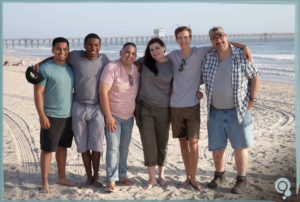
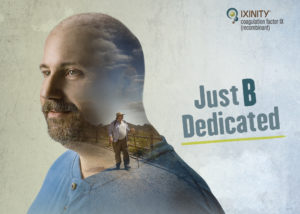
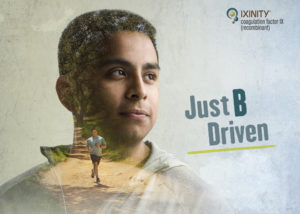


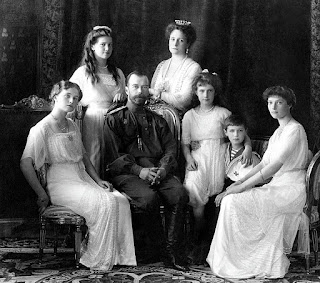
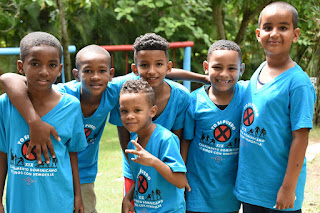 Five years sure went by fast. That was the last time I attended the Dominican Republic hemophilia camp “Yo Sí Puedo!” (Yes, I Can!). I don’t understand how the time slipped by, especially when I have such a deep attachment to the DR, which is only a 4-hour plane ride away. The DR was the first developing country I ever worked with, back in 1998, when there was no camp, and no factor. While Project SHARE supplied factor when we could, together with the fledgling Fundación Apoyo al Hemoílico (FAHEM) we created the DR’s first hemophilia camp. We were all new at this, so the first camp was a bit wild… but magical. While the camp grounds were trashed by Hurricane Georges, no one much minded when Red Sox pitcher Pedro Martinez, Houston Astros Moises Alou and Toronto Blue Jay Tony Fernandez showed up to autograph baseballs and play ball with the kids!
Five years sure went by fast. That was the last time I attended the Dominican Republic hemophilia camp “Yo Sí Puedo!” (Yes, I Can!). I don’t understand how the time slipped by, especially when I have such a deep attachment to the DR, which is only a 4-hour plane ride away. The DR was the first developing country I ever worked with, back in 1998, when there was no camp, and no factor. While Project SHARE supplied factor when we could, together with the fledgling Fundación Apoyo al Hemoílico (FAHEM) we created the DR’s first hemophilia camp. We were all new at this, so the first camp was a bit wild… but magical. While the camp grounds were trashed by Hurricane Georges, no one much minded when Red Sox pitcher Pedro Martinez, Houston Astros Moises Alou and Toronto Blue Jay Tony Fernandez showed up to autograph baseballs and play ball with the kids!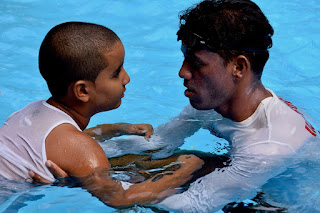 Those children I first met at camp are grown now, and many are serving as camp counselors. In fact, the one who was the quietest at that first camp, Brahian Valdez, is now the most extroverted, and has become Camp Director!
Those children I first met at camp are grown now, and many are serving as camp counselors. In fact, the one who was the quietest at that first camp, Brahian Valdez, is now the most extroverted, and has become Camp Director! The theme was “Super Heroes,” perfect for this group. I could easily see during the four days of camp in the Lomas Lindas area outside of Santo Domingo that the older guys hobbled about on stiffened ankles, arthritic knees, and misaligned hips. The younger ones had no joint problems and dashed about madly, enjoying the excitement of camp and the freedom from their parents. After working with developing countries for 20 years now, this amazed me. Children without joint problems. Here, in the Dominican Republic.
The theme was “Super Heroes,” perfect for this group. I could easily see during the four days of camp in the Lomas Lindas area outside of Santo Domingo that the older guys hobbled about on stiffened ankles, arthritic knees, and misaligned hips. The younger ones had no joint problems and dashed about madly, enjoying the excitement of camp and the freedom from their parents. After working with developing countries for 20 years now, this amazed me. Children without joint problems. Here, in the Dominican Republic.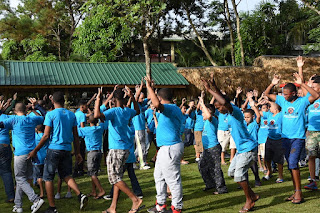 Camp is now a highly structured program that mixes plenty of activities with quiet time and lectures for the 60 campers with hemophilia. Each day starts around 7; by 7:30 everyone is on the grass doing exercises, led by Cuchito, the coach. Blowing his whistle, Cuchito has the children stretch, do light exercises and then march in ever tightening circles, which ends in a crush and everyone cheering. Breakfast follows, which is always delicious. The food in the DR is superb! Then activities: it might be swimming in the pool, arts and crafts, or a game of ball that serves as teambuilding.
Camp is now a highly structured program that mixes plenty of activities with quiet time and lectures for the 60 campers with hemophilia. Each day starts around 7; by 7:30 everyone is on the grass doing exercises, led by Cuchito, the coach. Blowing his whistle, Cuchito has the children stretch, do light exercises and then march in ever tightening circles, which ends in a crush and everyone cheering. Breakfast follows, which is always delicious. The food in the DR is superb! Then activities: it might be swimming in the pool, arts and crafts, or a game of ball that serves as teambuilding.
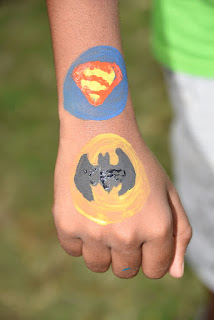 The favorite activity, judging by the cheers and participation level, is wiffle ball. You must know that baseball is almost a religion in the DR! The DR sends more ballplayers to the US than any their country, and about 25% of all ball players in the leagues are from the DR. While we don’t use baseballs or softballs for safety reasons at camp, the kids and adults attack the wiffle ball as if it were! The games are exciting, loud, fun, funny and tiring!
The favorite activity, judging by the cheers and participation level, is wiffle ball. You must know that baseball is almost a religion in the DR! The DR sends more ballplayers to the US than any their country, and about 25% of all ball players in the leagues are from the DR. While we don’t use baseballs or softballs for safety reasons at camp, the kids and adults attack the wiffle ball as if it were! The games are exciting, loud, fun, funny and tiring!
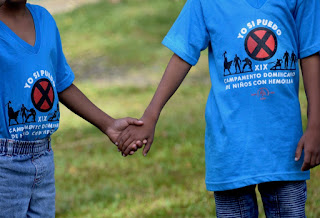 The World Federation of Hemophilia, at Bioverativ’s request, donated all the factor to camp this year. No child had to worry about running out, which allowed them to run about!
The World Federation of Hemophilia, at Bioverativ’s request, donated all the factor to camp this year. No child had to worry about running out, which allowed them to run about!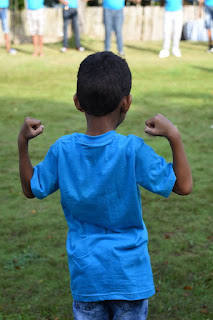 And for the first time, WFH attended camp. Miquel Izquierdo, WFH regional director, arrived from Mexico to enjoy the camp—he himself has hemophilia! He fit right in and was beloved by all. He witnessed the great results of the factor donation, and also of Save One Life as about 16 enrolled beneficiaries attended camp, all looking great and doing well!
And for the first time, WFH attended camp. Miquel Izquierdo, WFH regional director, arrived from Mexico to enjoy the camp—he himself has hemophilia! He fit right in and was beloved by all. He witnessed the great results of the factor donation, and also of Save One Life as about 16 enrolled beneficiaries attended camp, all looking great and doing well!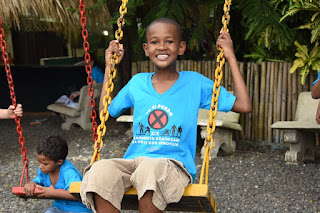 “I want to thank you and Presidenta Haydée Benoit de Garcia for including my family in hemophilia camp in the Dominican Republic. We were so impressed with the camp and honored to be there. The Dominican boys were learning to deal with hemophilia in a poor country, and they were having fun too (the lively whiffle ball game was our favorite activity). It was clear that this camp was something these boys looked forward to all year. What struck me most was that Haydée and her counselors were teaching the boys to live a values-driven life no matter their circumstances. Haydee’s leadership and her love for these boys — as well as yours, Laurie — is clearly impacting generations of Dominicans living with hemophilia. My children walked away believing in the camp theme “Yes You Can!” (¡Yo Sí Puedo!). Thank you for all you do, Laurie, and for the role of Save One Life in impacting lives in the Dominican Republic and around the world.”
“I want to thank you and Presidenta Haydée Benoit de Garcia for including my family in hemophilia camp in the Dominican Republic. We were so impressed with the camp and honored to be there. The Dominican boys were learning to deal with hemophilia in a poor country, and they were having fun too (the lively whiffle ball game was our favorite activity). It was clear that this camp was something these boys looked forward to all year. What struck me most was that Haydée and her counselors were teaching the boys to live a values-driven life no matter their circumstances. Haydee’s leadership and her love for these boys — as well as yours, Laurie — is clearly impacting generations of Dominicans living with hemophilia. My children walked away believing in the camp theme “Yes You Can!” (¡Yo Sí Puedo!). Thank you for all you do, Laurie, and for the role of Save One Life in impacting lives in the Dominican Republic and around the world.”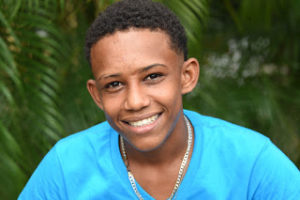
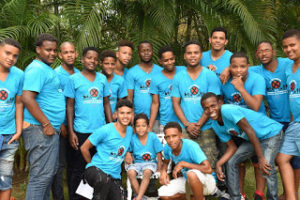
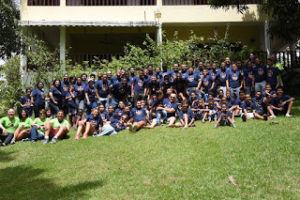
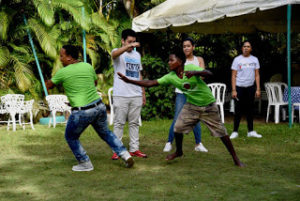
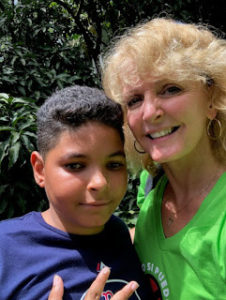
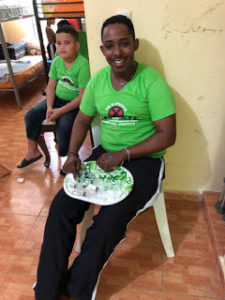
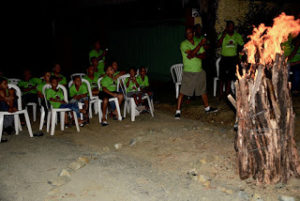
 Summer is here, and millions of families will seek adventure and thrills at theme parks like Six Flags, Disney World or Universal Studios. What a wonderful day a family can have at a theme park! Kids and parents love the rides, water slides, entertainment and general excitement. Are there any special safety concerns or precautions for families with a child with hemophilia? Yes!
Summer is here, and millions of families will seek adventure and thrills at theme parks like Six Flags, Disney World or Universal Studios. What a wonderful day a family can have at a theme park! Kids and parents love the rides, water slides, entertainment and general excitement. Are there any special safety concerns or precautions for families with a child with hemophilia? Yes!